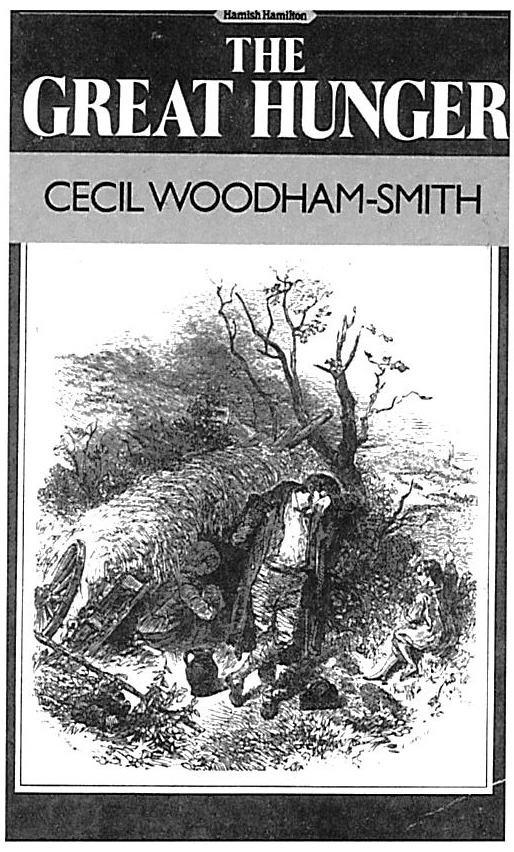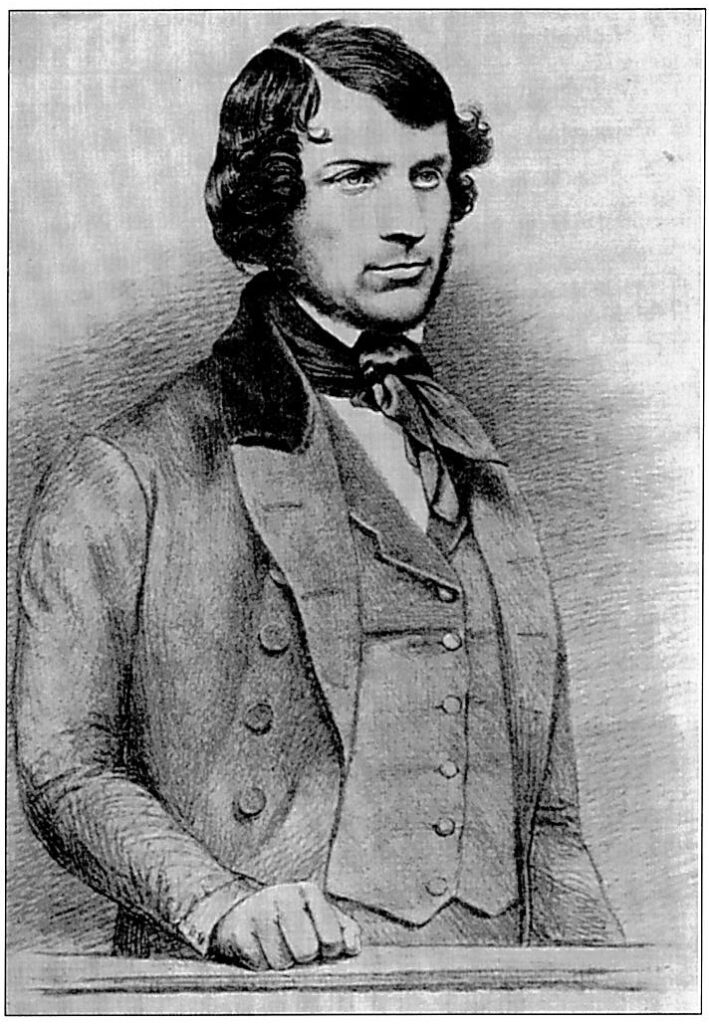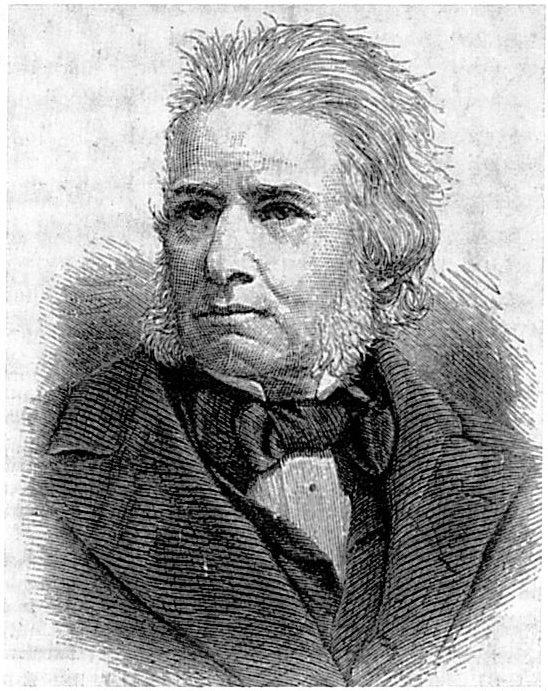by James S. Donnelly, Jr
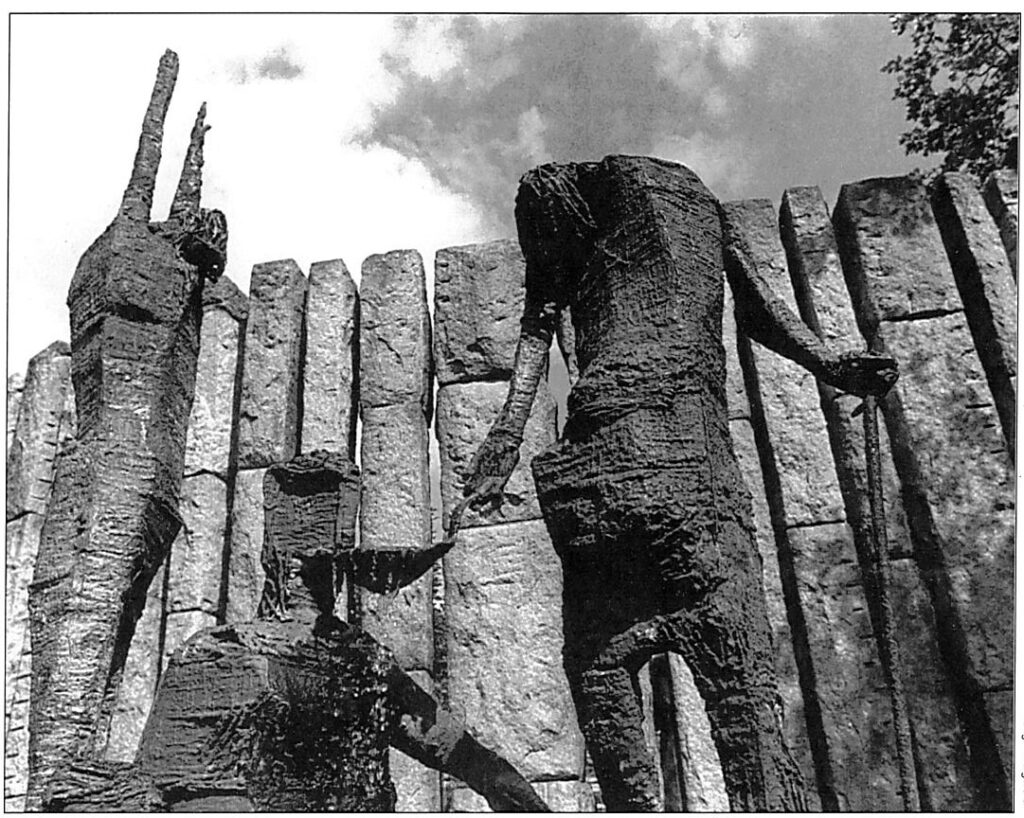
For many years now revisionist historians have delighted in debunking nationalist interpretations of the Irish past. In general revisionism has had a triumphal march, slaying one dragon of nationalist historiography after another. But more recently, the revisionist enterprise received a serious challenge from Brenden Bradshaw in that citadel of revisionism, the journal Irish Historical Studies. His article, ‘Nationalism and historical scholarship in modern Ireland’ published in November 1989, took the whole revisionist school to task for its pursuit of a kind of scientific, objective, value-free examination of the Irish past. Without subscribing fully to his arguments, I believes that he is essentially correct in asserting that numerous revisionist historians have not honestly and squarely confronted what he calls ‘the catastrophic dimensions of the Irish past’. I wish to examine this question with reference to the Great Famine, focusing especially on the issue of the extent to which the British government was responsible for mass death and mass emigration because of the policies which it did not pursue.
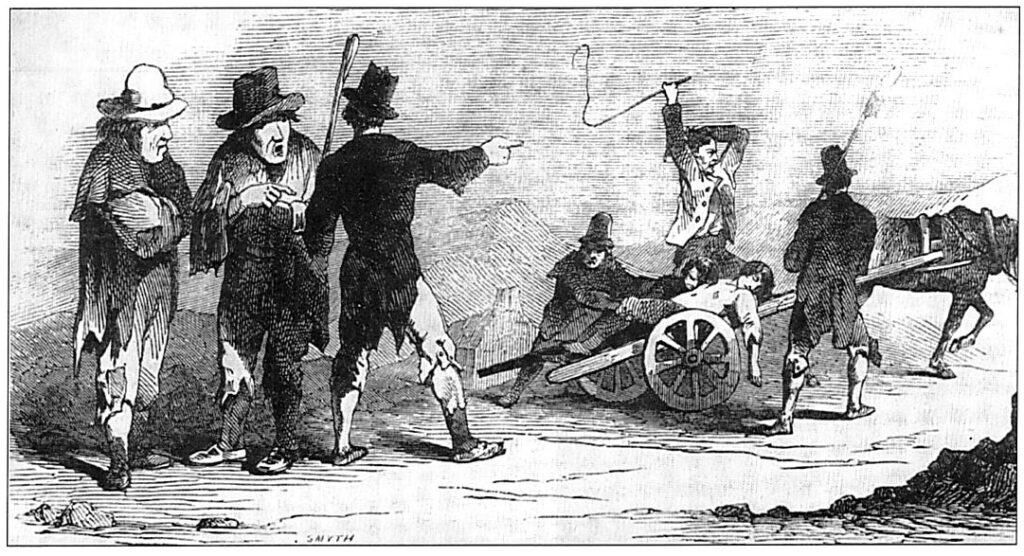
‘Ungoverned passion’
For revisionist historians the publication in 1962 of The Great Hunger: Ireland 1845-1849 by Cecil Woodham-Smith was not an altogether welcome event. Perhaps they envied the book’s commercial success: The Great Hunger was immediately a best-seller on two continents, and its premier status as the most widely read Irish history book of all time has only grown with the years.
But far more troubling to the revisionists was the ‘ungoverned passion’ to which numerous reviewers of the book succumbed. Vigorously protesting against this ‘torrent of muddled thinking’, the late F.S.L. Lyons called attention in Irish Historical Studies to a striking aspect of the popular response:
Ugly words were used in many reviews – ‘race-murder’ and ‘genocide,’ for example – to describe the British government’s attitude to the Irish peasantry at the time of the Famine, and Sir Charles Trevelyan’s handling of the situation was compared by some excited writers to Hitler’s ‘final solution’ for the Jewish problem. This response to Mrs. Woodham-Smith’s work was not confined to Irish reviewers, nor even to imaginative authors like Mr. Frank O’Connor, but cropped up repeatedly in English periodicals also, occasionally in articles by reputable historians.
Among such reputable scholars Lyons must have had in mind A.J.P. Taylor, the distinguished if controversial historian of modern Germany, whose review of The Great Hunger appeared in the New Statesman and was later reprinted under the title ‘Genocide’ in his Essays in English History. At times Taylor sounded just like the famous revolutionary nationalist John Mitchel. In the late 1840s, declared Taylor with a sweeping reference to the notorious German extermination camp, ‘all Ireland was a Belsen’. He minced no words: ‘The English governing class ran true to form. They had killed two million Irish people.’ And that the death toll was not higher, Taylor savagely remarked, ‘was not for want of trying’. As evidence, he offered the recollection of Benjamin Jowett, the Master of Balliol: ‘I have always felt a certain horror of political economists since I heard one of them say that the Famine in Ireland would not kill more than a million people, and that would scarcely be enough to do much good’.
Woodham-Smith herself was reasonably restrained in her conclusions, and Lyons absolved her of responsibility for what he saw as the emotionalism and the wholly inappropriate comparisons of the reviewers. But at the same time he accused her of other serious faults: vilifying Charles Trevelyan, the key administrator of famine relief, and exaggerating his importance, failing to place the economic doctrine of laissez-faire firmly in its contemporary context and glibly using it as an explanatory device without acknowledging the looseness of this body of ideas, and in general committing the cardinal sin of the popularizer – choosing narrative and description over analysis. Admittedly, her merits as a popularizer were great. ‘No one else’, conceded Lyons, ‘has conveyed so hauntingly the horrors of starvation and disease, of eviction, of the emigrant ships, of arrival in Canada or the United States, of the terrible slums on both sides of the Atlantic to which the survivors so often found themselves condemned’. And if all that students wanted to know was ‘what happened in the starving time and how it happened’, then The Great Hunger would supply the answers. But they would have to turn elsewhere if they wanted ‘to know the reasons why’ – a rather unkind ironic wordplay with the title of Woodham-Smith’s famous book about the British role in the Crimean War. Apparently, Lyons’s stinging criticisms of Woodham-Smith were widely shared by other members of the Dublin historical establishment. In University College, Dublin, in 1963 history students encountered as the essay topic of a final exam the dismissive proposition, ‘The Great Hunger is a great novel’.
‘No conspiracy to destroy the Irish nation’
In saying that students of the Famine who wanted to know the reason why would have to turn elsewhere, Lyons had in mind the academically acclaimed but much less famous book The Great Famine: Studies in Irish History 1845- 52, edited by R. Dudley Edwards and T. Desmond Williams, two of the founding fathers of modern Irish historiography. The editors and contributors could not be accused of emotionalism or of politicising their tragic subject. They appear to have been quite anxious to avoid re-igniting old controversies or giving any countenance to the traditional nationalist-populist view of the Famine. The overall tone was set in the ‘Foreword’, where Kevin B. Nowlan soothingly observed:
In folklore and political writings the failure of the British government to act in a generous manner is quite understandably seen in a sinister light, but the private papers and the labours of genuinely good men tell an additional story. There was no conspiracy to destroy the Irish nation. The scale of the actual outlay to meet the Famine and the expansion in the public-relief system are in themselves impressive evidence that the state was by no means always indifferent to Irish needs. But the way in which Irish social problems so frequently overshadowed all else in the correspondence of statesmen testifies in a still more striking manner to the extent to which the British government was preoccupied with the Famine and distress in Ireland.
The worst sins attributed by Nowlan to the British government were its ‘excessive tenderness’ for the rights of private property, its ‘different [and limited] view of its positive responsibilities to the community’, and its inevitable habit of acting ‘in conformity with the conventions of [the larger] society’. High politicians and administrators were not to be blamed; they were in fact innocent of any ‘great and deliberately imposed evil’. Instead, insisted Nowlan, ‘the really great evil lay in the totality of that social order which made such a famine possible and which could tolerate, to the extent it did, the sufferings and hardship caused by the failure of the potato crop’. In other words, no one was really to blame because everyone was.
Nowlan’s complete lack of asperity was repeated by Thomas P. O’Neill in his pivotal chapter on the administration of relief. Although O’Neill was not uncritical of British policies or their implementation, his language was at times egregiously soft and his judgement lacking in firmness. Thus we are told that public relief officials ‘throughout the country’ were ‘seriously overworked’ but nonetheless ‘gallantly endeavoured to bring the best possible result from the schemes laid down for them by the government’. The question is, the best possible result for whom? Certainly, often not for the famished and the diseased. Trevelyan too ‘worked unceasingly’, as if zeal can only be virtuous, and his plans had what are merely called ‘faults’, one of which was to insist that the cost of famine relief must always be a local charge. If instead, concluded O’Neill rather weakly, the British state had admitted that in the event of such a catastrophe its paramount responsibility was to save life, ‘the Irish famine might have been more capably countered’ (my italics).
Racialist prejudices
Such charitable judgements about British relief policies and about the attitudes and motivations that lay behind them would presumably have been less make if the editors had not decided to exclude from their volume a chapter by Brian Osborne on English public opinion, which exhibited deep hostility for the Catholic Irish in the wake of the 1848 rebellion, and which long before then often betrayed vehement racialist prejudices. But even in a chapter where issues relating to British responsibility might have been discussed in some detail, namely, that by Roger McHugh on the oral tradition which brings the volume to a close, there is a truly remarkable avoidance of engagement. It is not that McHugh, whose contribution to the volume is among the best, fails to mention how famine sufferers condemned this or that aspect of the administration of relief But he never seriously examines the politicisation of the Famine in Irish popular consciousness.
That their collective volume essentially failed to answer the basic question of British responsibility was recognised by at least one of the editors at the time. Soon after the book was published at the end of 1956, Dudley Edwards confided to his diary: ‘If it is [called] studies in the history of the Famine, it is because they [the contributors?] are not sure all questions are answered. There are still the fundamental matters whether its occurrence was not due to the failure of the sophisticated to be alert’. By ‘the sophisticated’ I assume he means the political elite in Britain. Indeed, Edwards was aware much earlier, in 1952, that a merely mechanical yoking together of a series of specialist contributions on such subjects as politics, relief, agriculture, emigration, and folklore would ‘fail to convey the unity of what was clearly a cataclysm in the Butterfield sense’. The need to comprehend and to portray the disaster as a whole was, he felt, inescapable. If this were done, it would ‘also answer the question of responsibility, so unhesitatingly laid at England’s door by John Mitchel’. But in the end, when the book was published, no comprehensive narrative was provided, and as a result, the powerful Mitchel indictment was not answered. Indeed, the book in which Mitchel most fully developed his indictment — The Last Conquest of Ireland (Perhaps) — does not even appear in the bibliography.
Mitchel’s accusation of genocide
One reason why Mitchel repels modern revisionist historians is that his language is so vehement in tone and so extreme in the substance of its accusations. His fullest statement that British policies amounted to genocide came near the end of his book, where he asserted that:
[a] million and a half of men, women, and children were carefully, prudently, and peacefully slain by the English government. They died of hunger in the midst of abundance, which their own hands created; and it is quite immaterial to distinguish those who perished in the agonies of famine itself from those who died of typhus fever, which in Ireland is always caused by famine … The Almighty indeed sent the potato blight, but the English created the Famine.
What exactly was it that convinced Mitchel, and by what evidence did he seek to convince others, that British policies were genocidal in both intent and result? First, there was the government’s ‘strict adherence to the principles of ‘political economy” in spite of, or indeed because of, its consequences: the export of huge quantities of grain and livestock to Britain in the midst of famine; the refusal to sell relief supplies at less than market prices; and the wasteful expenditure of large sums on ‘unproductive’ public works. Mitchel was especially incensed by the government’s refusal to close the ports to the outward shipment of grain and livestock, and he skilfully exploited the issue.
In fact he badly misinterpreted what was really happening in the critical area of food supply. Irish grain exports decreased substantially during the Famine years, and imports, after a fatal delay, eventually soared. Even so, modern historians cannot reject the Mitchel perspective entirely. The stoppage of exports after the disastrous harvest of 1846, and before the arrival of large supplies of foreign grain early in 1847, might well have greatly slowed the onset of mass starvation and disease by providing a bridge between extreme food scarcity and relative abundance.
‘Contrivances for slaughter’
The force of Mitchel’s case against the British government, however, was (and remains) much stronger when he turned to consider the cost and character of those relief measures that he branded as ‘contrivances for slaughter’. Repeatedly, he condemned the utter inadequacy of the British government’s financial contribution and the gross unfairness in a supposedly ‘United Kingdom’ of throwing almost the entire fiscal burden (after mid-1847) on Ireland alone. He portrayed in the darkest colours the economic results of the application (in the Poor Law Amendment Act of 1847) of the Whig maxim that Irish property must support Irish poverty. When the Irish poor-law system teetered on the brink of collapse in 1849, prompting the Whig government to bring forward a special scheme to aid bankrupt western unions (the Rate-in-Aid Act), the burden of furnishing relief was still confined exclusively to Ireland. ‘Assuming that Ireland and England are two integral parts of an “United Kingdom” (as we are assured they are)’, Mitchel declared almost gleefully, ‘it seems hard to understand why a district in Leinster should be rated to relieve a pauper territory in Mayo, and a district in Yorkshire not’.
Mitchel detected the genocidal intent of the British government not only in its refusal to accept the essential degree of fiscal responsibility but also in the relief machinery itself and in the way it was allegedly designed to work. Whatever relief was made available to the hungry and the starving, whether in the form of employment or of soup or of a place in the workhouse, was ultimately designed to break the grip of the Irish farmer and cottier on his house and land, as a prelude to death at home or emigration and exile abroad. He was perfectly convinced that the consequences of British policy were not unintended but deliberately pursued, and he said so forcefully and repeatedly:
When the new ‘Outdoor Relief’ Act began to be applied, with its memorable quarter-acre clause, all this process went on with wonderful velocity, and millions of people were soon left landless and homeless. That they should be left landless and homeless was strictly in accordance with British policy; but then there was danger of the millions of outcasts becoming robbers and murderers. Accordingly, the next point was to clear the country of them and diminish the poor rates by emigration.
Voluntary emigration?
Although the British government did not directly promote mass emigration, Mitchel poured scorn on the idea that the huge exodus was voluntary in any meaningful sense. If landlords cleared estates by means of the quarter-acre clause and chased ‘the human surplus from pillar to post’, so that relief under the poor law ‘becomes the national way of living, you may be sure there will be a deep and pervading anxiety to get away….’ At that point, asserted Mitchel, the hypocritical and sanctimonious ‘exterminators’ would ‘say to the public, “Help us to indulge the wish of our poor brethren; you perceive they want to be off. God forbid we should ship them away, save with their cordial concurrence!”‘
At first glance Mitchel’s accusations may seem far-fetched, wildly erroneous. And some of them surely were, such as the claim that before monies voted by parliament at the behest of Peel’s government early in 1846 became available to relieve distress, ‘many thousands had died of hunger’; or the claim, made in a diatribe against food exports in the midst of famine, that ‘many a shipload [of Irish grain] was carried four times across the Irish Sea’ to satisfy the injunctions of laissez-faire. But other charges contained a core of truth, or an important aspect of the truth, even if they were not wholly accurate. In this category were the murderous effects of allowing the harvest of 1846 to be exported, the refusal to make the cost of fighting the Famine a United Kingdom charge, and the decree that from mid-1847 onwards Irish ratepayers (landlords and tenants) must bear all the expense of relieving the destitute. The harsh words which Mitchel had for Trevelyan do not seem to have been undeserved, even if the professional historian would choose different language. After all, in the closing paragraph of his book The Irish Crisis (1848), Trevelyan could be so insensitive as to describe the Famine as ‘a direct stroke of an all-wise and all-merciful Providence’, one which laid bare ‘the deep and inveterate root of social evil’; the Famine, he declared, was ‘the sharp but effectual remedy by which the cure is likely to be effected…. God grant that the generation to which this opportunity has been offered may rightly perform its part …’. As one historian has observed almost charitably, ‘such a view was itself unconducive to substantial government intervention to relieve peasant suffering’. Nor is there much truth in the suggestion sometimes made by revisionist historians that the importance of Trevelyan, the assistant secretary of the Treasury, has been greatly exaggerated. Never was Treasury influence and control in more ascendancy.
Even John Mitchel’s insistence on the perpetration of genocide becomes more understandable when certain crucial facts and their interrelationship are kept in mind. Among the lessons that ‘the most frightful calamities’ of 1846-47 had driven home, according to the incorrigibly blinkered Trevelyan, was that ‘the proper business of a government is to enable private individuals of every rank and profession in life to carry on their several occupations with freedom and safety, and not itself to undertake the business of the landowner, merchant, moneylender, or any other function of social life’. Admittedly, the massive public works and the ubiquitous government-sponsored soup kitchens had violated the doctrinaire laissez-faire views thus espoused by Trevelyan, but that is precisely the point: they were gross violations which very recent experience, as interpreted by Trevelyan (and Whig ministers) in late 1847, had shown should never be repeated. And they were not, even though the greater part of famine mortality was yet to come.
Making relief a local charge
As if to make amends for its misguided profligacy through the summer of 1847, Russell’s Whig government then moved to fix almost the entire fiscal burden on the Irish poor-law system. The 130 poor-law unions into which Ireland was divided were each self-contained raisers and spenders of their own tax revenue; the poorest unions in the country were to go it alone, their ratepayers sinking under the accumulating weight of the levies needed to support a growing mass of pauperism. It mattered not in the eyes of the British government whether this weak fiscal structure was really capable of keeping mass death at bay. What mattered was the supposedly universal and timeless validity of a then-cherished economic doctrine. ‘There is’, declared Trevelyan in late 1847, ‘only one way in which the relief of the destitute ever has been or ever will be conducted consistently with the general welfare, and that is by making it a local charge‘. It was on this principle that British policy rested from mid-1847 onwards, with the result that, as Trevelyan himself said (and said proudly), ‘The struggle now is to keep the poor off the rates’.
What we would consider serious defects of this tragically excessive reliance on the Irish poor-law system were not necessarily regarded as such by Trevelyan or Whig ministers. Certain key features of the Irish poor law, especially the notorious quarter-acre clause and the less well-known £4-rating provision, led directly to mass evictions, to the infamous clearances. British officials and Irish landlords mentally insulated themselves against the inhumanity and often murderous consequences of mass evictions by taking the view that clearances were now inevitable, and that they were essential to Irish economic progress. The potato failure had simply deprived conacre tenants and cottiers of any future in their current status. ‘The position occupied by these classes’, Trevelyan insisted in The Irish Crisis, ‘is no longer tenable, and it is necessary for them to become substantial farmers or to live by the wages of their labour’. Although a towering mass of human misery lay behind the twin processes of clearance and consolidation, Trevelyan (and many others) could minimise the human tragedy and concentrate on the economic miracle in the making. Among the signs that ‘we are advancing by sure steps toward the desired end’, remarked Trevelyan laconically in The Irish Crisis, was the prominent fact that ‘the small holdings, which have become deserted owing to death or emigration or the mere inability of the holders to obtain a subsistence from them in the absence of the potato, have, to as considerable extent, been consolidated with the adjoining farms; and the middlemen, whose occupation depends on the existence of a numerous small tenantry, have begun to disappear’. Is it not remarkable that in this passage describing the huge disruption of clearance and consolidation, the whole question of agency is pleasantly evaded? Tenants are not dispossessed by anyone; rather, small holdings ‘become deserted’, and the reasons assigned for that do not include eviction. But whatever the reasons, the transformation is warmly applauded.
‘Room to become civilised’
There is thus no cause to think that Trevelyan would have disagreed with the Kerry landlord who affirmed privately in October 1852 that ‘the destruction of the potato is a blessing to Ireland’. This was the common view among the landed elite. Lord Lansdowne’s agent W.S. Trench put the same point somewhat differently in September of the same year: ‘Nothing but the successive failures of the potato … could have produced the emigration which will, I trust, give us become civilised’. But the connecting line that ran from the blight to mass evictions and mass emigration embraced the poor-law system imposed by Britain. As the economist Nassau Senior was told in 1852 by his brother, himself an Irish poor-law commissioner, ‘The great instrument which is clearing Ireland is the poor law. It supplies both the motive and the means…. It was passed for the purpose of relieving England and Scotland at the expense of Ireland; it will probably relieve Ireland at the expense of England and Scotland.’
British ministers could also regard with perfect equanimity yet another major consequence of the operation of the poor law during the Famine. This was the severe strain which it placed on the solvency of many Irish landlords. The Irish landed elite was generally viewed hypercritically in British political circles. Indeed, in British mythology of the Famine the feckless, improvident, and irresponsible Irish landlord was second in sinister importance only to the idling and duplicitous Irish pauper labourer. British officials traced many of the worst evils of the Irish economic and social system to what they considered the landlords’ criminal neglect. For this reason the poor rates which landlords in impoverished parts of the south and west found so crushing in the late 1840s served in Trevelyan’s eyes the highest social and moral purposes. ‘The principle of the poor law’, he declared, ‘is that rate after rate should be levied for the preservation of life, until the landowners and farmers either enable the people to support themselves by honest industry or dispose of their property to those who can and will perform this indispensable duty.’
‘An all-wise and all-merciful Providence’
Thus it was a distinct gain when many Irish landlords were driven into bankruptcy by the burden of poor rates and other Famine-related losses. Their insolvency was part of that wider opportunity provided by ‘an all-wise and all-merciful Providence’ which must now be seized. By making it much easier for the clamouring creditors of bankrupt or heavily indebted Irish landlords to move against them, British ministers aimed to confer on a backward Irish agricultural system the elixir or magical healing of British capital and enterprise. This was the acknowledged strategy behind the famous Encumbered Estates Act of 1849 and its abortive predecessor. How much importance the Whig government attached to this legislation was signalled by Trevelyan in The Irish Crisis: ‘The fact is that the main hope of extrication from the slough of despond in which the small holders in the centre and west of Ireland are at present sunk is from the enterprise and capital and improved husbandry of the class of owners commonly known by the name of landlords’. Clearly, the landlords whom Trevelyan and the Whigs had in mind were not the current Irish landed elite, whose members he accused of relinquishing ‘their position in rural society’.
Conclusion
What should we make of all this? First, it is now much easier to see why John Mitchel could plausibly accuse the British government of genocide against the people of Ireland in the late 1840s, and why his indictment should have had such resonance at the popular level. The cost in human life of both what the government did and what it omitted to do was enormous. As to the bald charge of genocide, Mitchel was wrong. A.J.P. Taylor was right when he said of those who presided over British relief policy (Lord John Russell, Sir Charles Wood, and Trevelyan) that ‘they were highly conscientious men, and their consciences never reproached them’. But an analytical survey of the means, ends, and results of British policy does not leave much scope for the persistent inclination of revisionist historians to adopt what we might call a forgive-and-forget attitude.
Why they would want to do this, or why they might have done this even unconsciously, is itself an interesting and somewhat perplexing question. Part of the explanation is no doubt that they have been disinclined to judge the British response to the Great Famine harshly when the recent governmental record of fighting famine around the world has left so much to be desired, even after striking advances in technology and communications. Another part of the explanation may well be the probably correct perception that even limited endorsement of the Mitchel indictment would give political aid and comfort to revolutionary Irish nationalists. in our own time, whose version of this catastrophic episode in Irish history is a simplified rendition of Mitchel’s. Still another reason may be related to the obvious fact that Mitchel wrote The Last Conquest with a determined propagandist purpose, and it was his view that became and long remained by far the dominant popular interpretation among Irish Catholics at home and abroad. Historians, however, are not in the business of echoing past propaganda or of endorsing the popular myths used to forge new nations. Revisionist historians have seen it as their special duty to explode such myths. But they must also seek a fuller understanding of the degree to which Mitchel’s enormously effective propaganda corresponded to reality or illuminated it, and they cannot allow the political concerns of our own day to deflect them from this essential task.
James S. Donelly, Jr. is Professor of History at the University of Madison-Wisconsin
Further reading:
J. Mitchel, The Last Conquest of Ireland (Perhaps) (Dublin 1861)
C. Woodham-Smith, The Great Hunger: Ireland 1845-1849 (London 1962)
R.D. Edwards and T.D. Williams (eds.), The Great Famine: Studies in Irish History 1845-52 (Dublin 1956)
B. Bradshaw, ‘Nationalism and historical scholarship in modern Ireland’ in Irish Historical Studies (November 1989)

